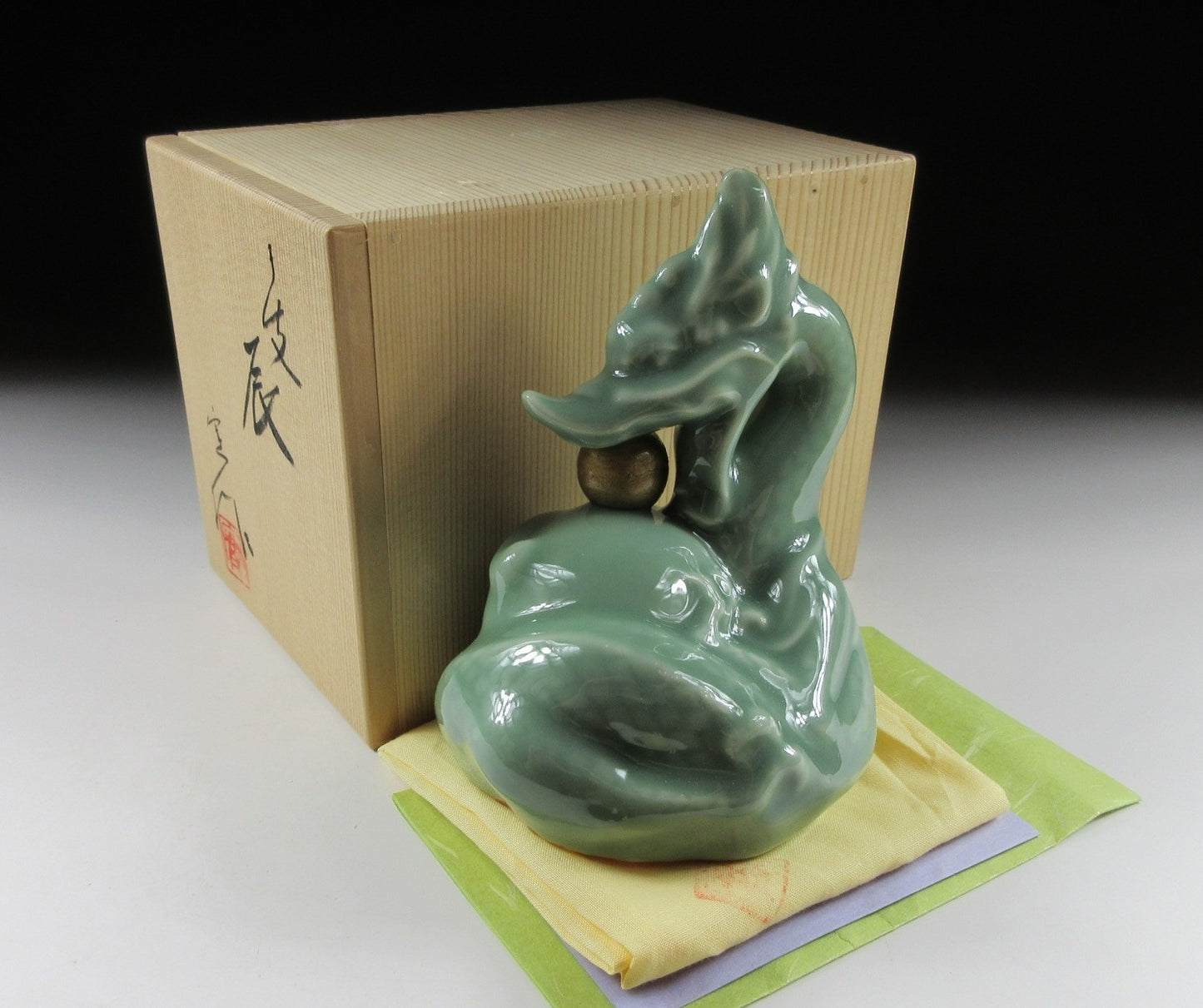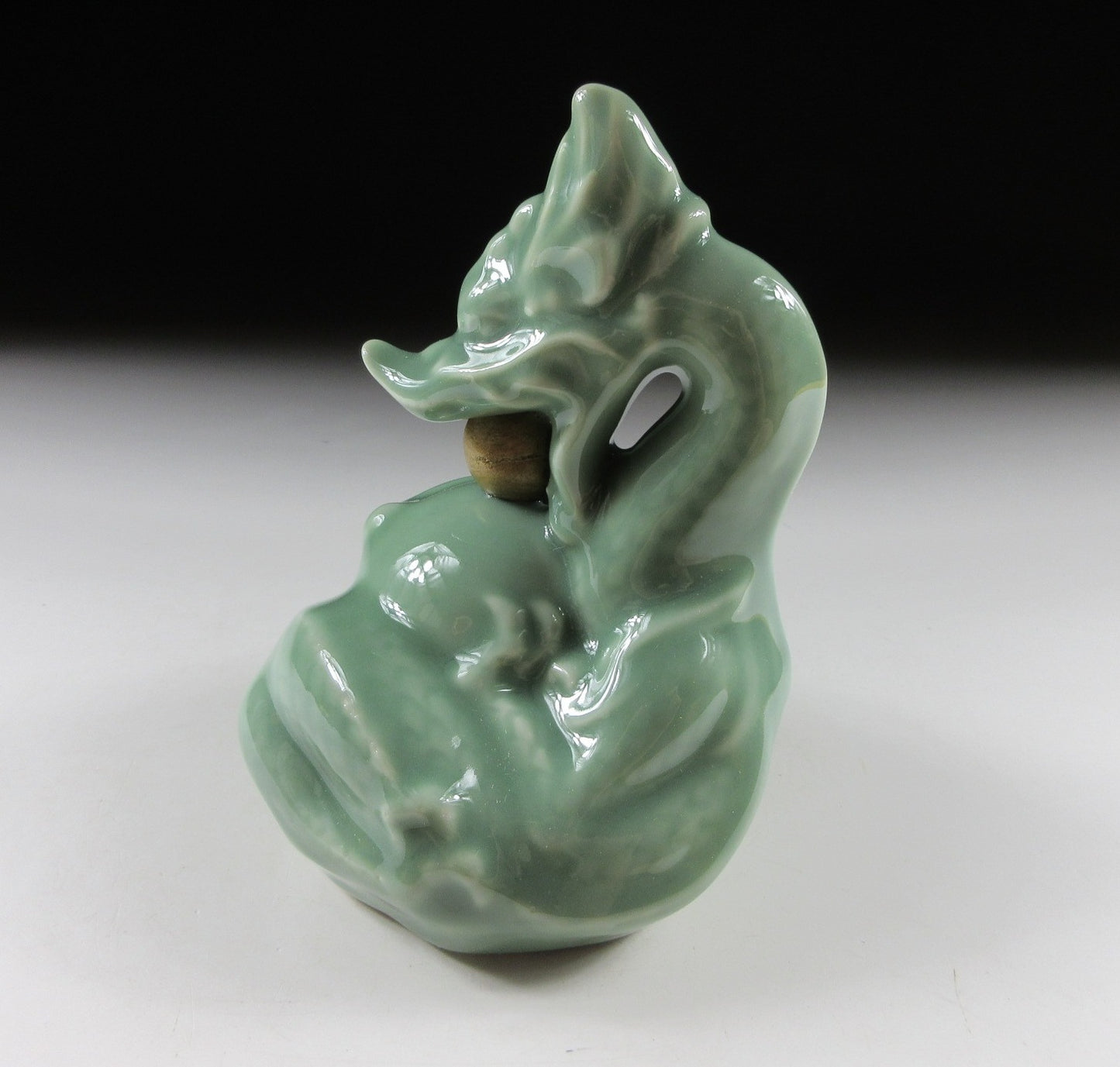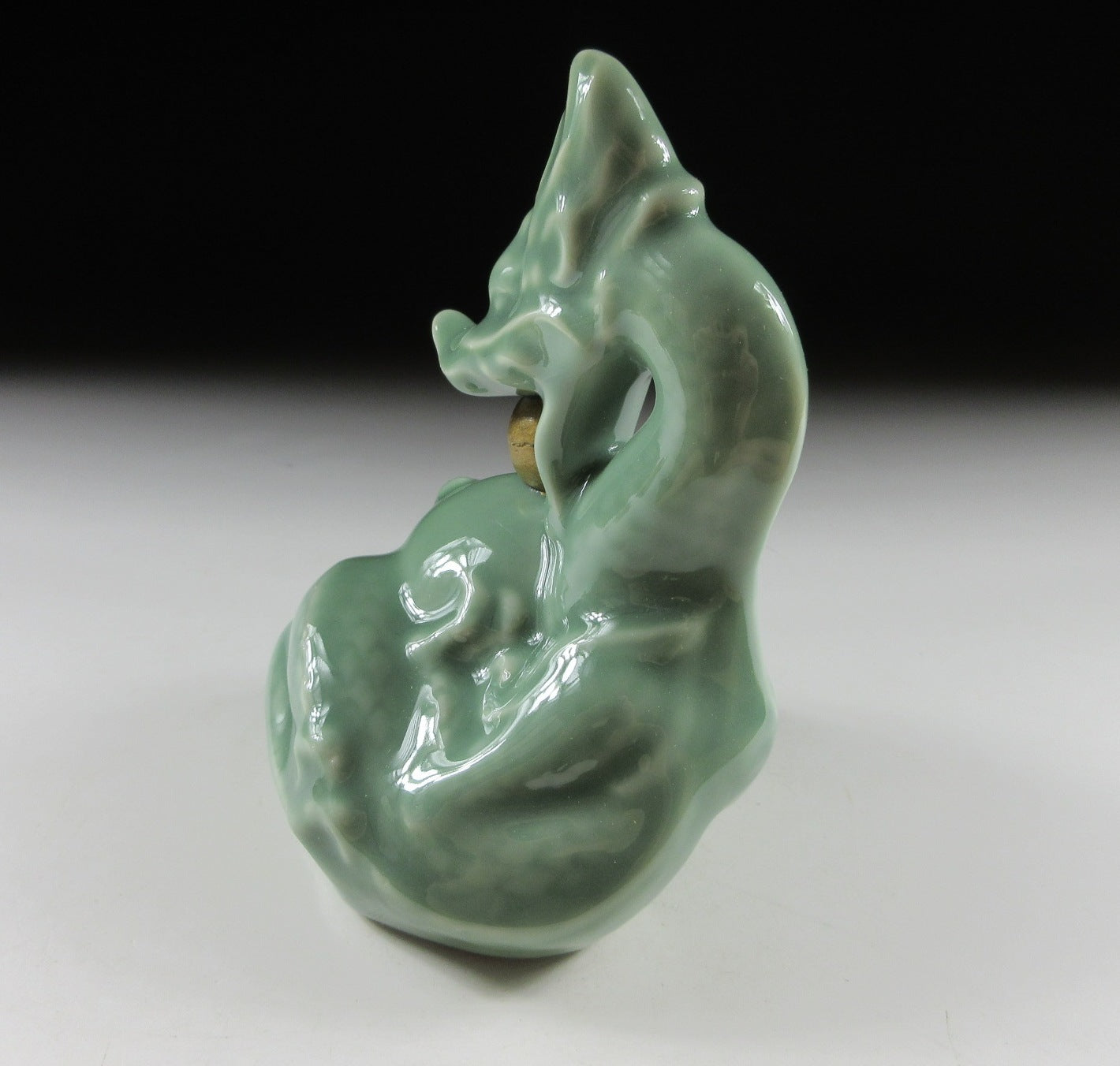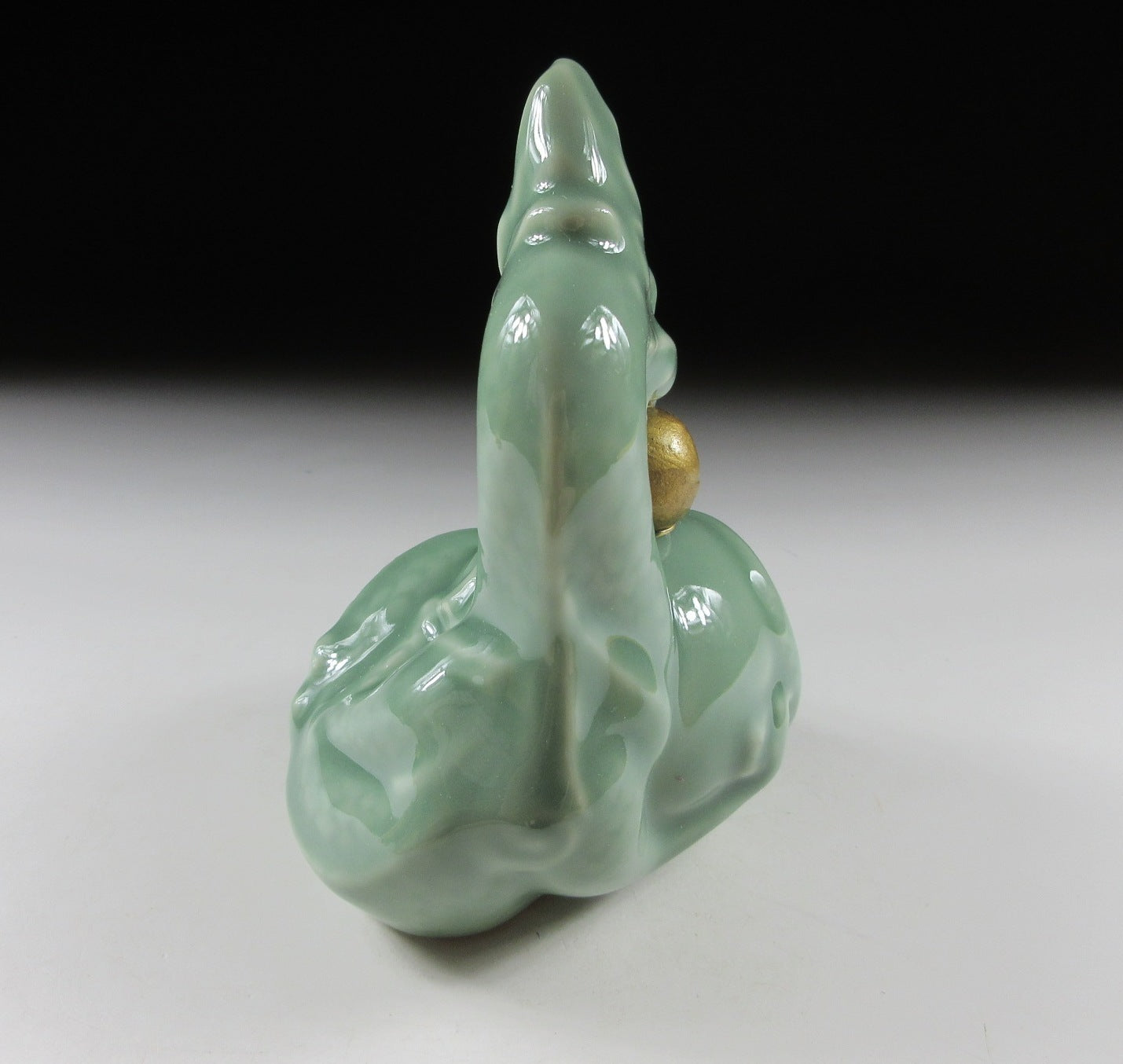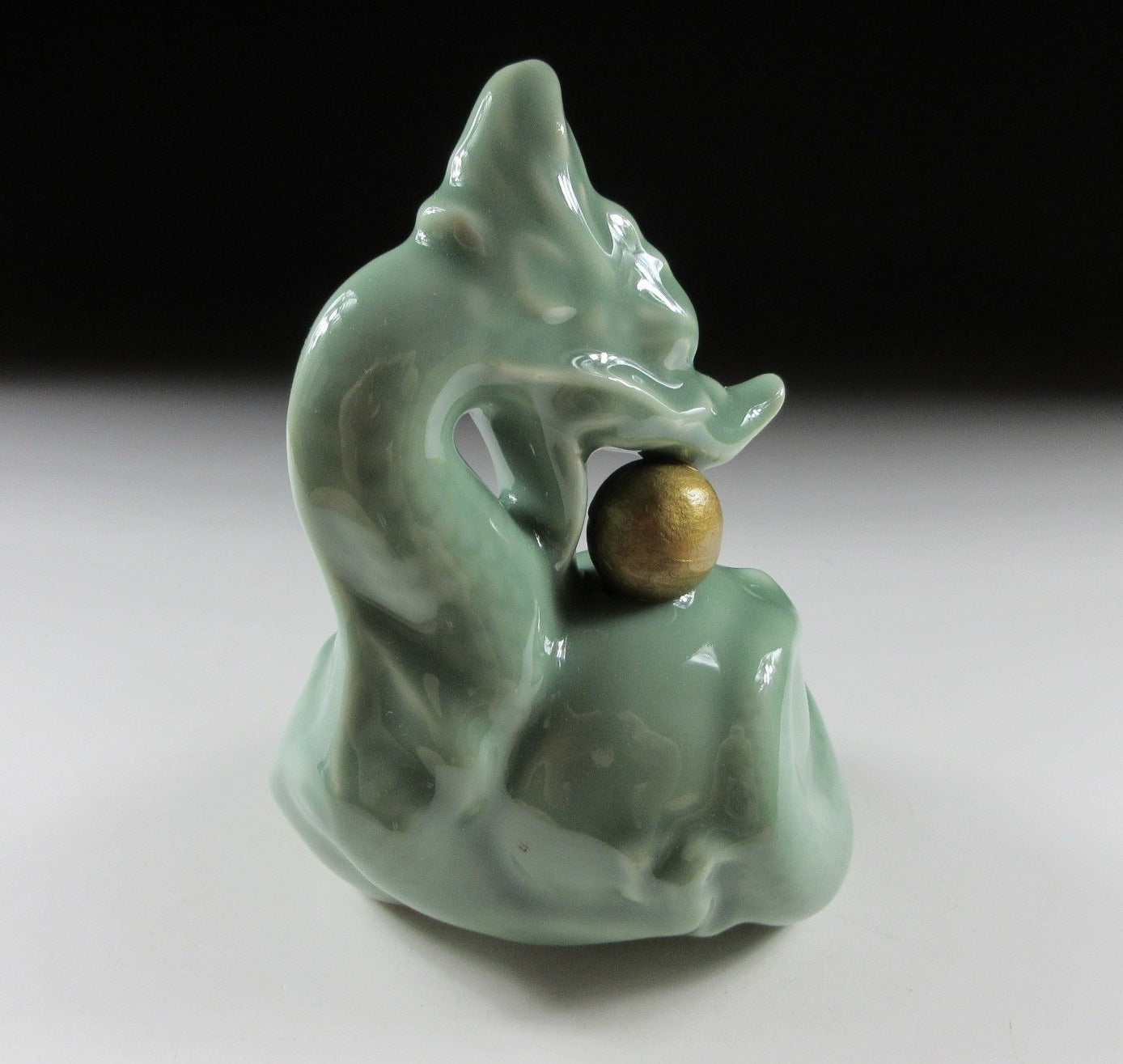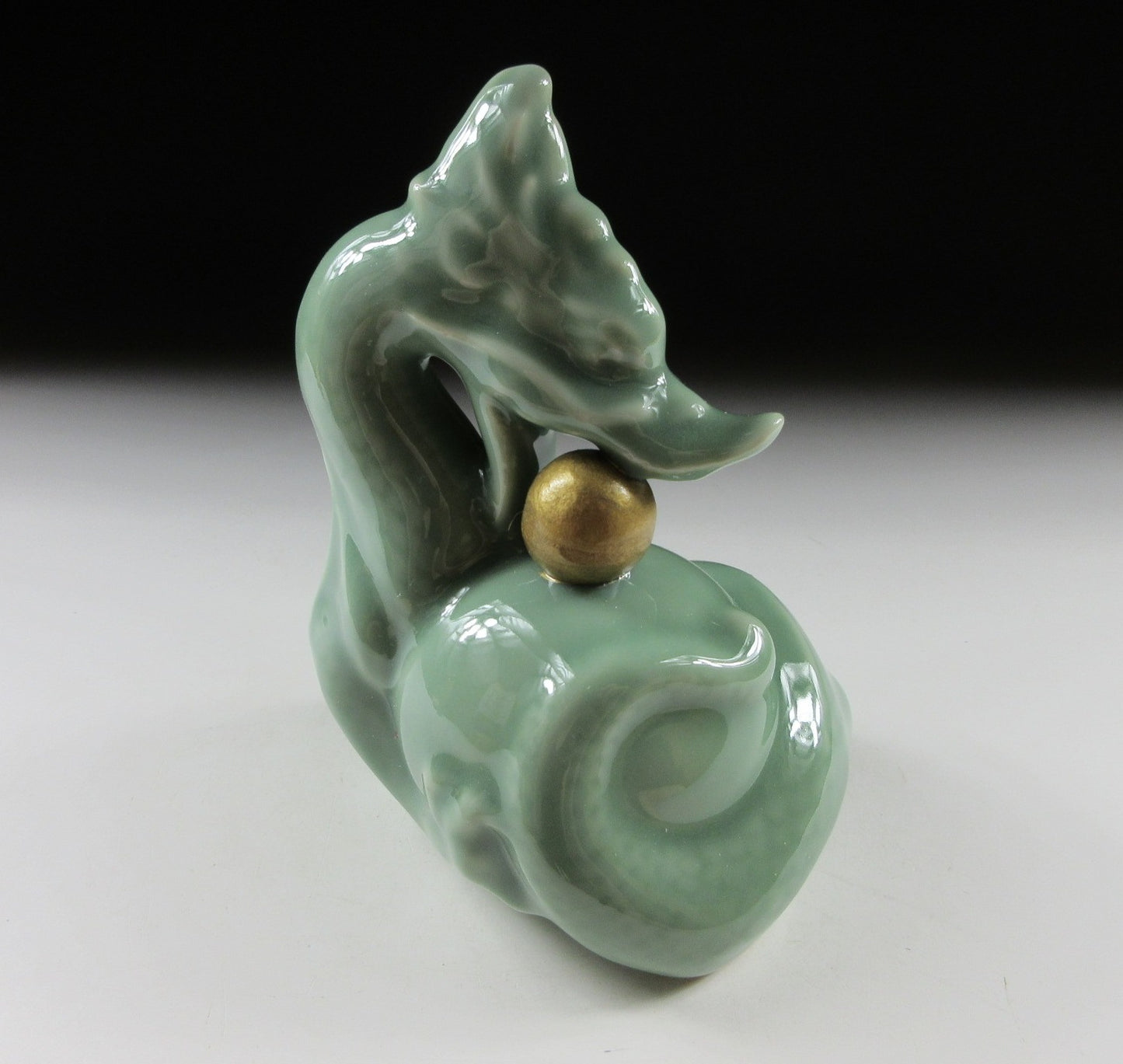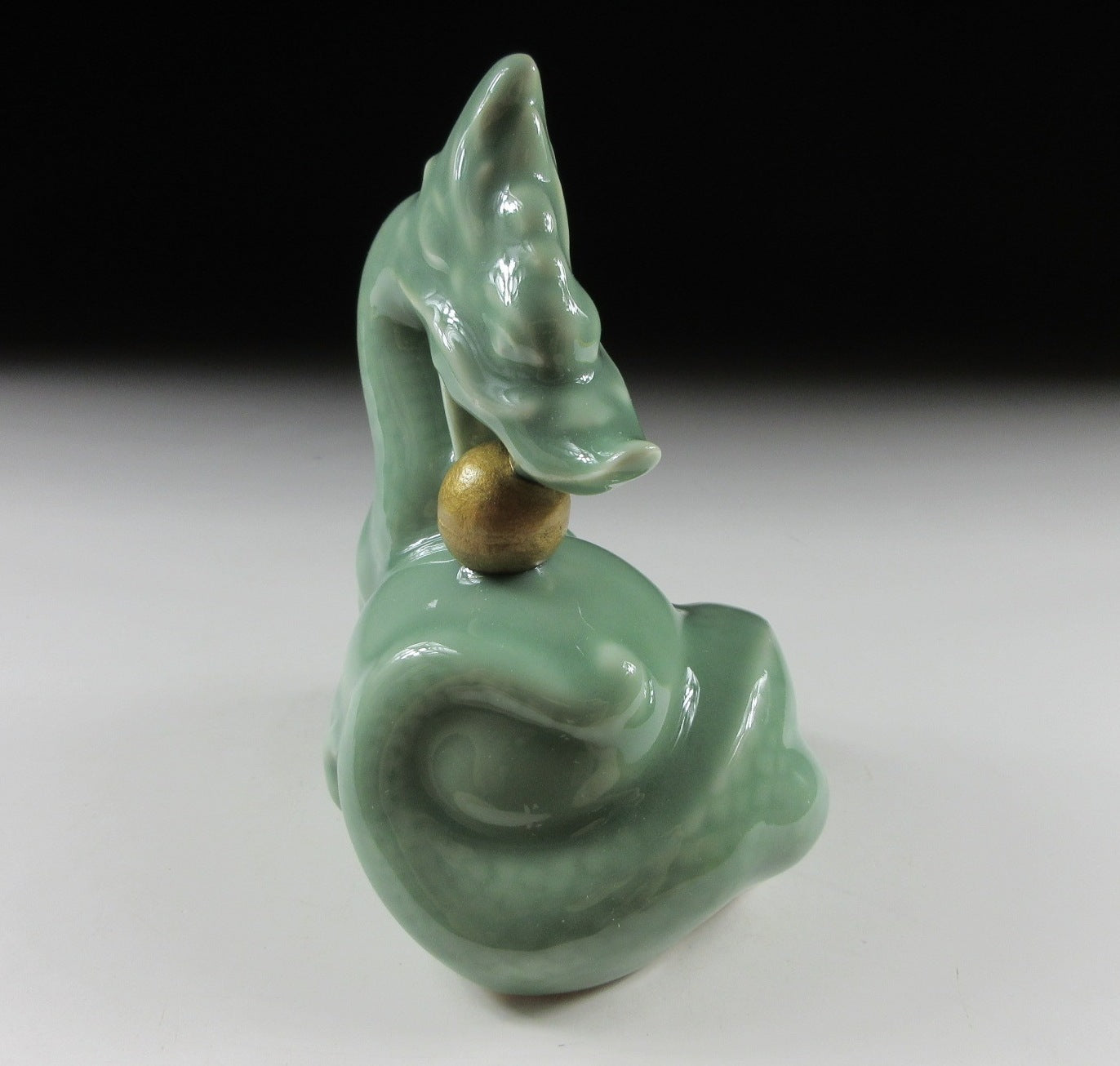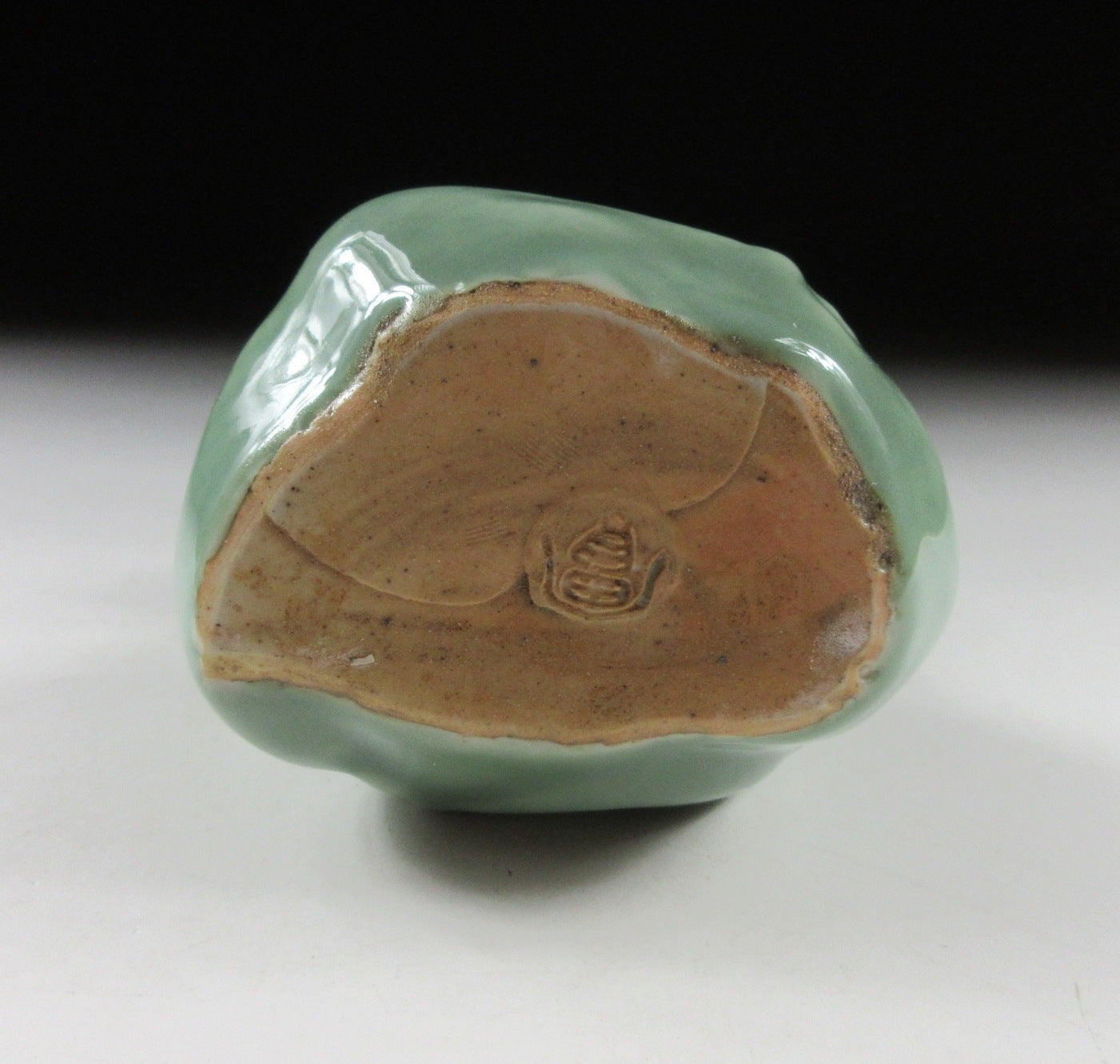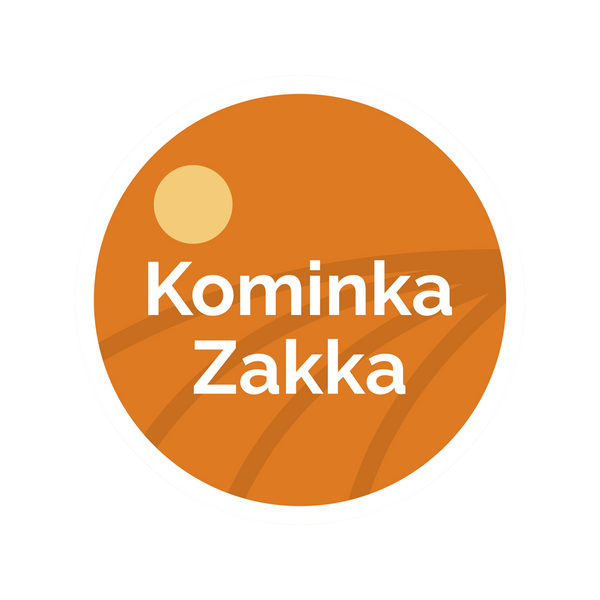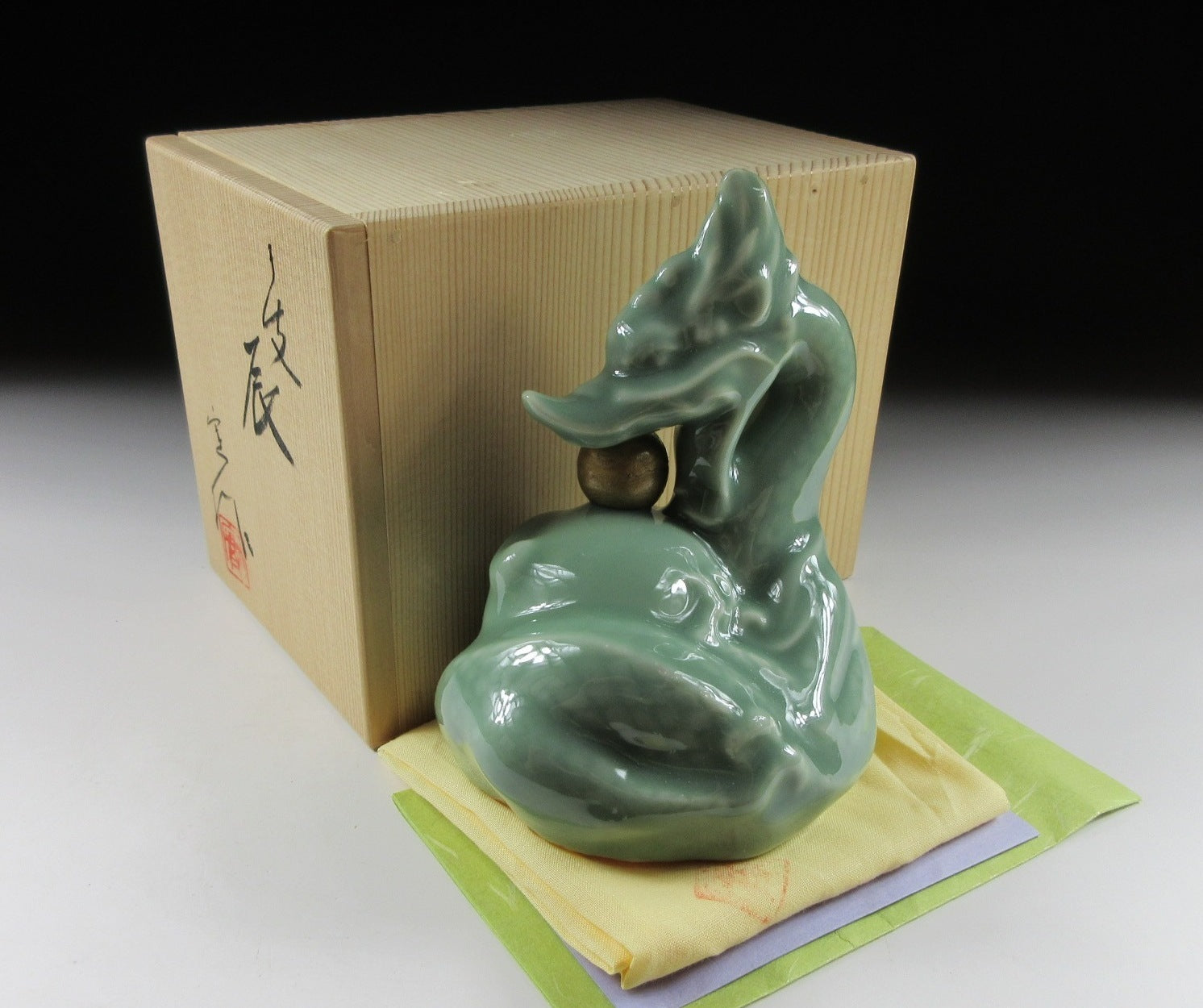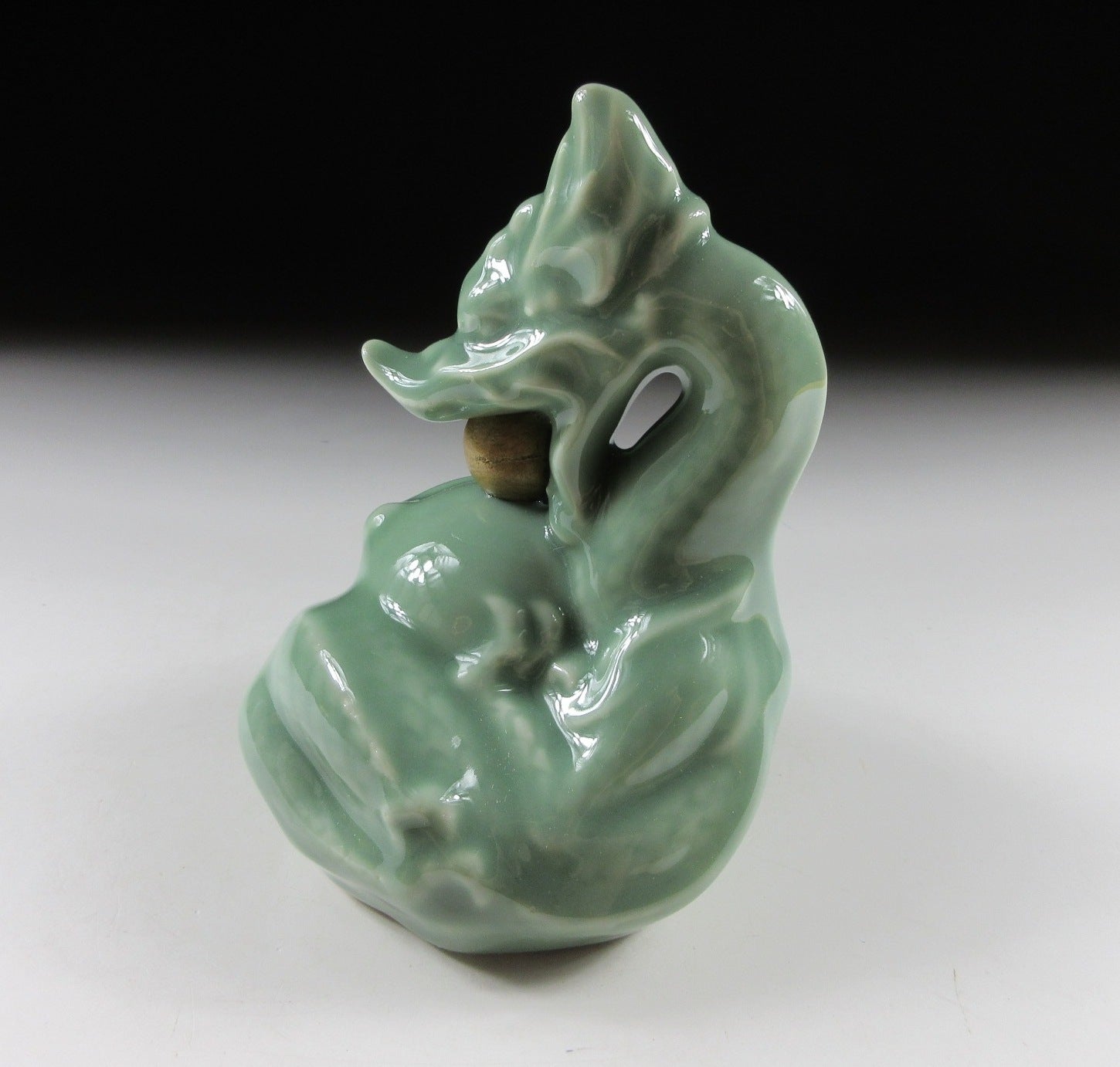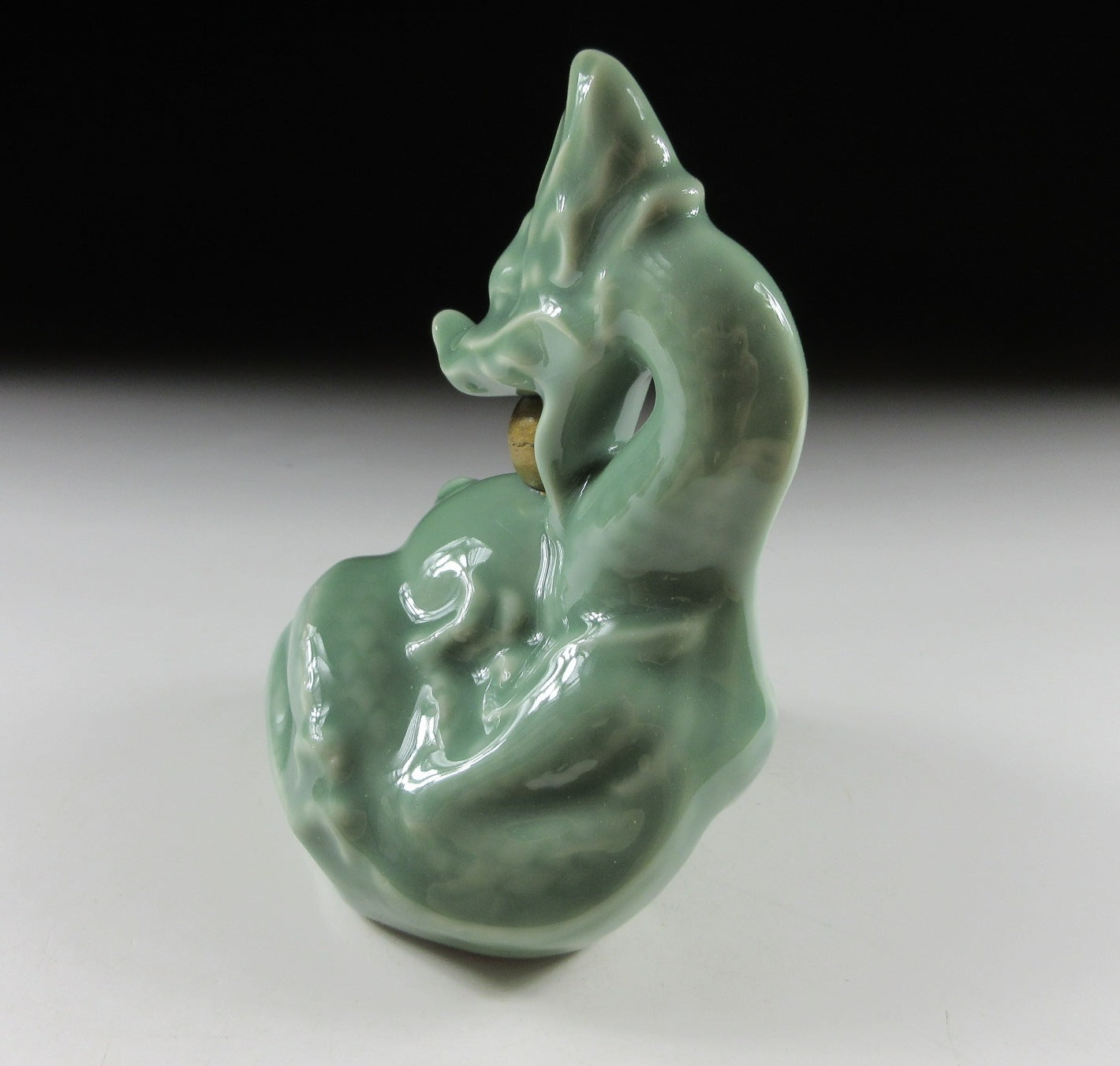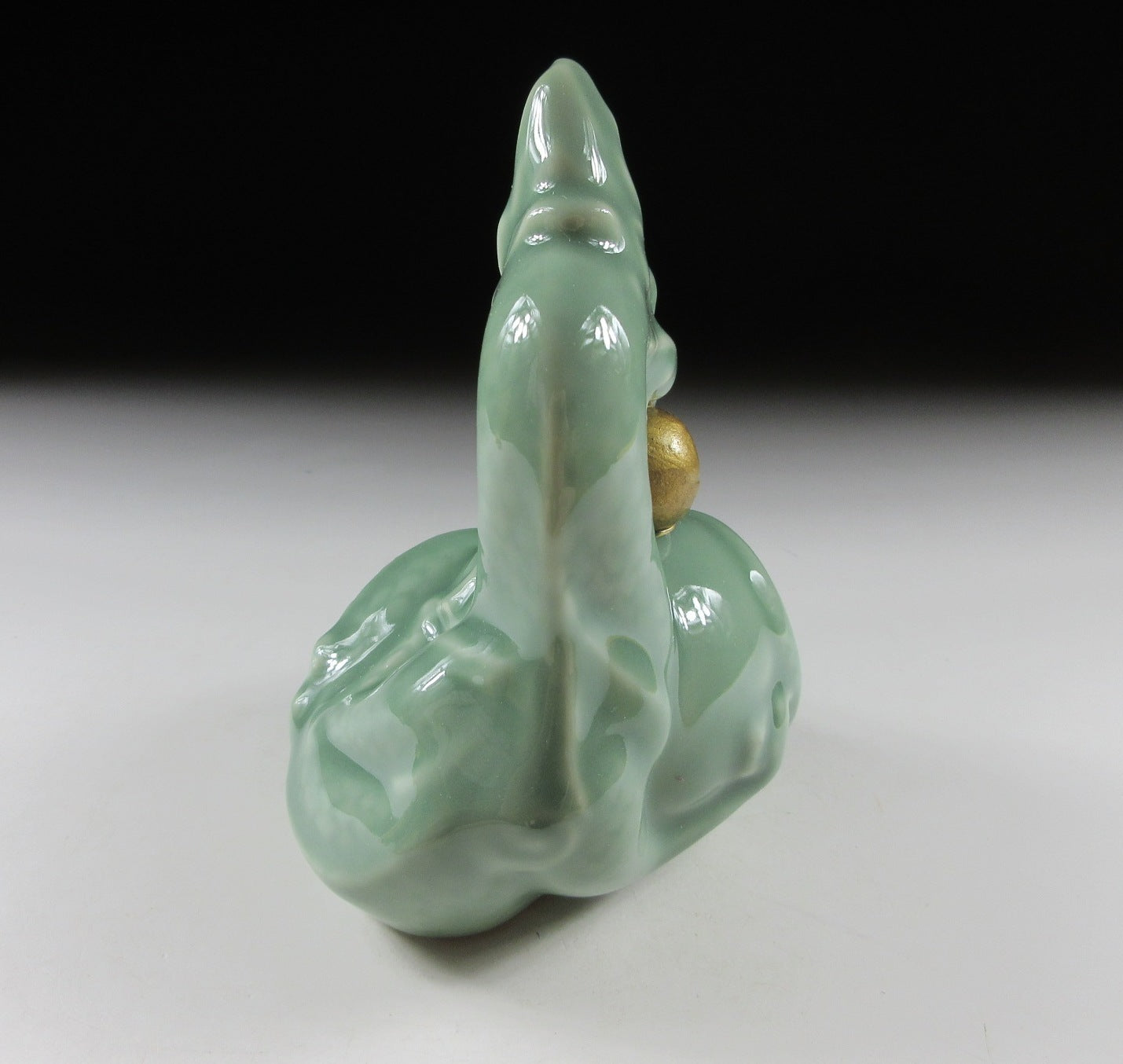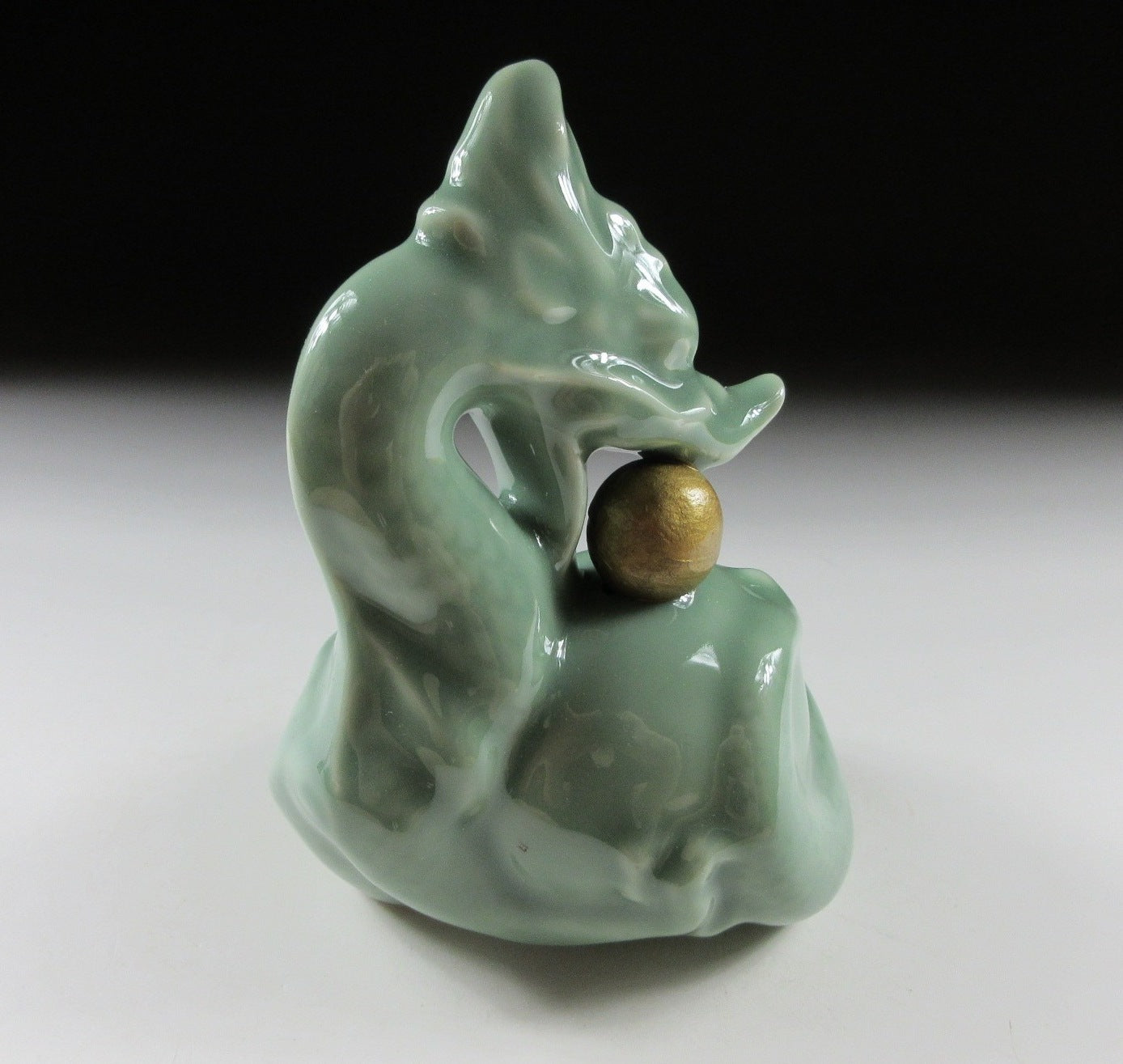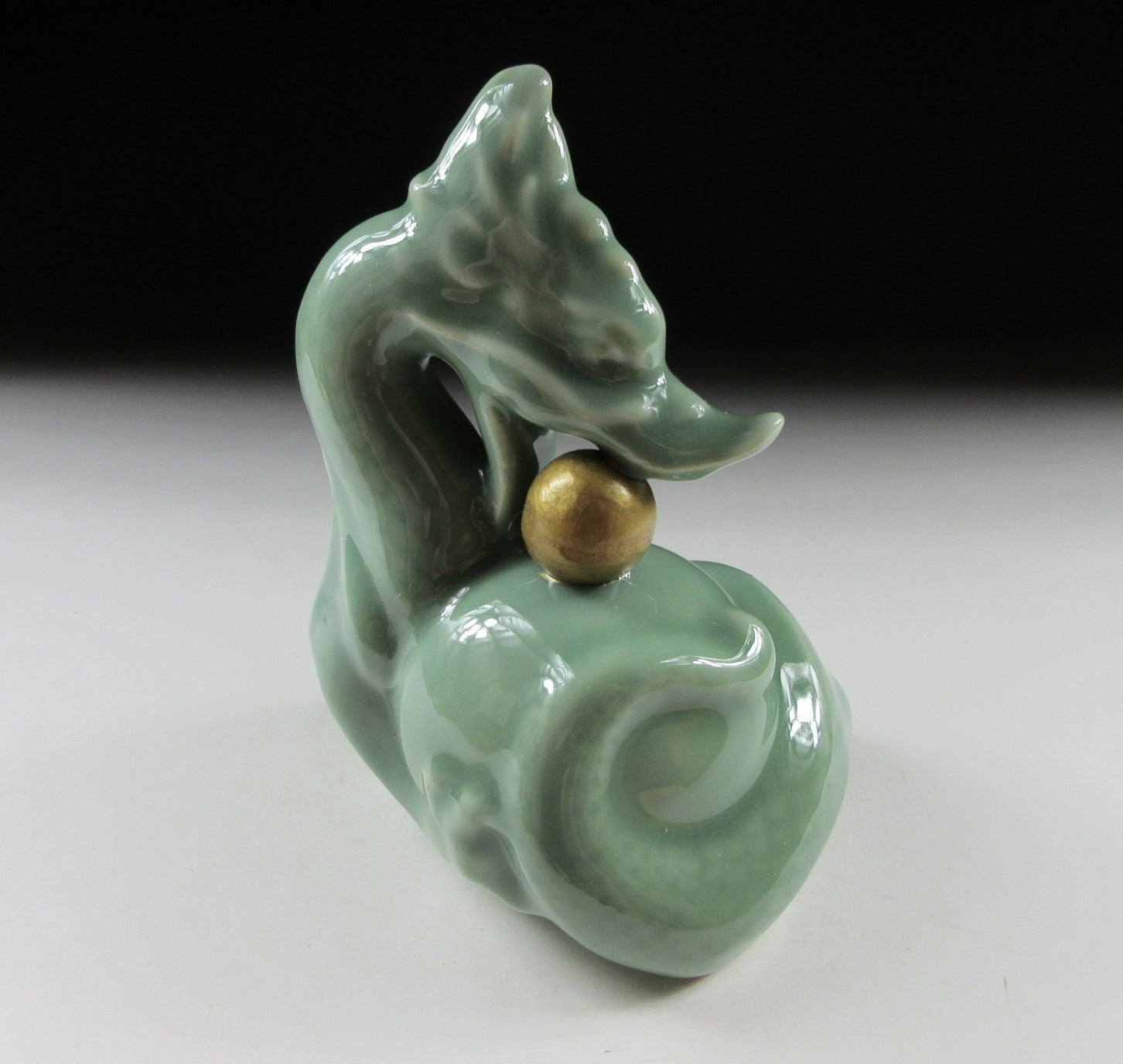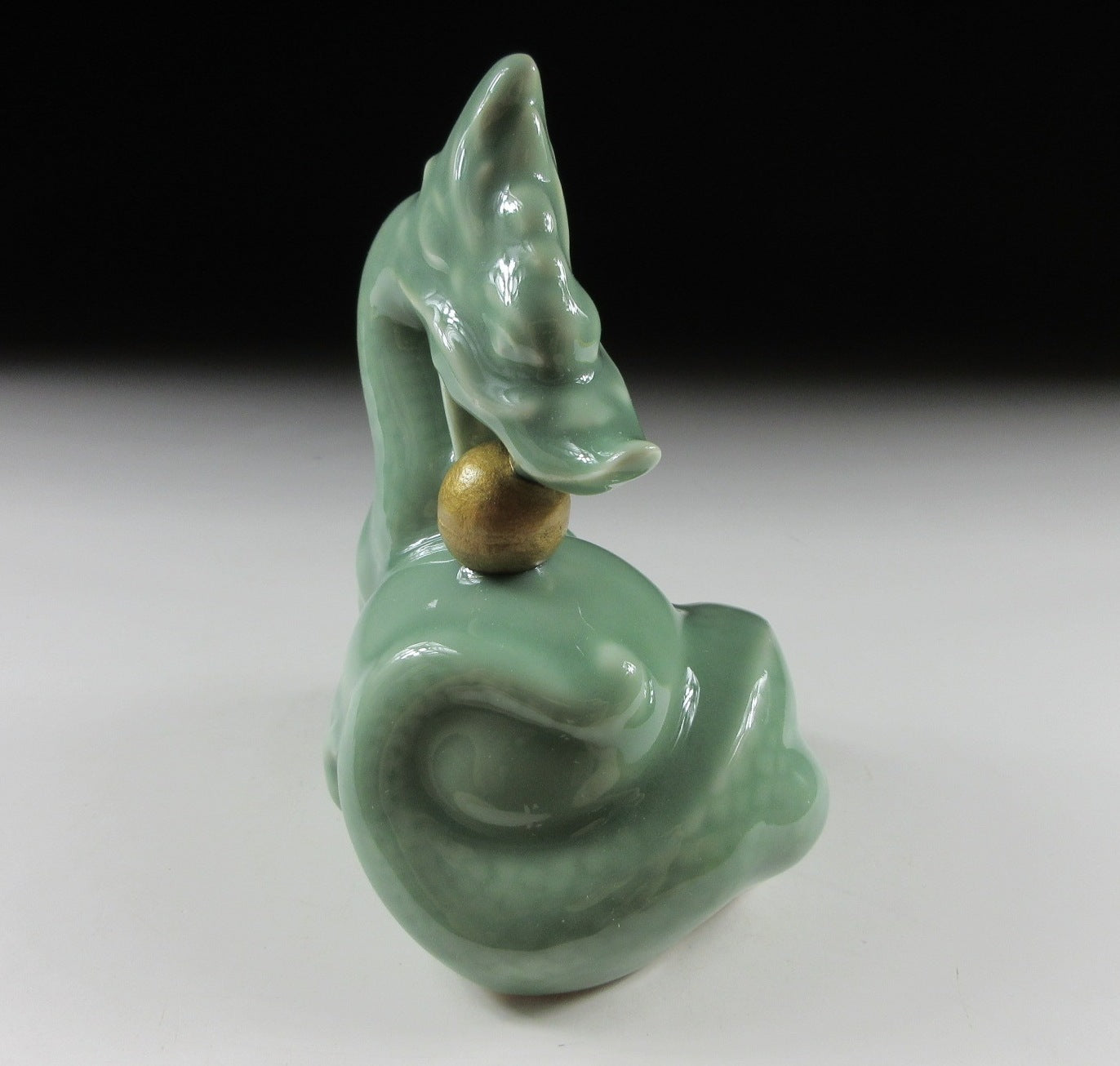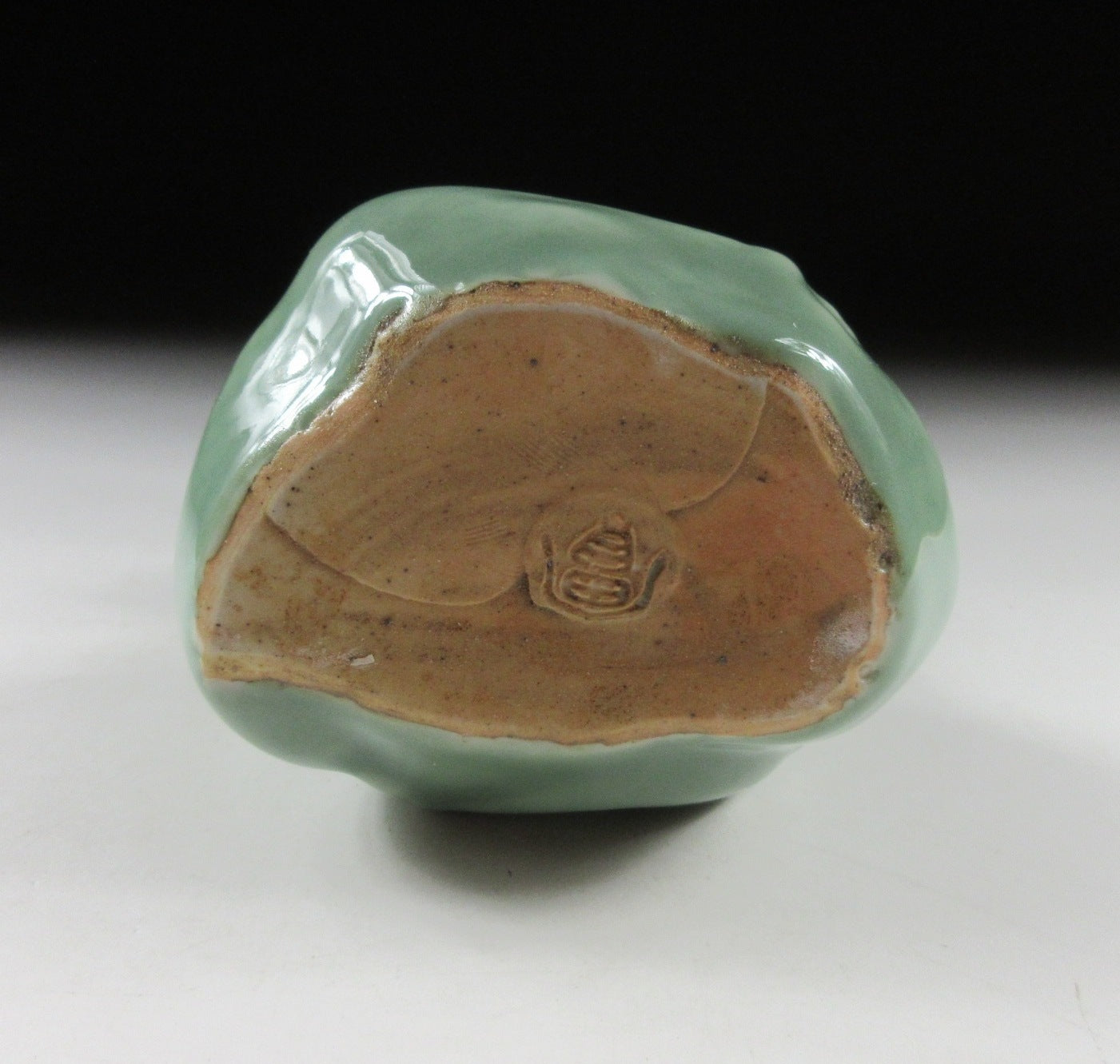Kominka Zakka
Kato Minoru Celadon Dragon Okimono
Kato Minoru Celadon Dragon Okimono
Couldn't load pickup availability
*SHIPPING OPTIONS VARY DEPENDING ON THE DESTINATION, PLEASE SCROLL TO THE END OF THIS LISTING FOR MORE DETAILS.
This listing is for a Kyo-ware dragon okimono made by noted potter, Kato Minoru. It was made from a slip mould and features green celadon glaze over a stoneware base. The dragon also has a gold ball in its mouth, and this ball is said to control the tides. There is a legend about a mythological character named Riujin, who was ruler of the waters and made his home beneath the sea or in deep lakes. Riujin was often depicted as an old man with a dragon on his back, and with him he carried the divine jewel tama, as well as the jewels of the flowing and retreating tides. This piece was most likely made to commemorate the Year of the Dragon back in 2000. The stamp of the potter can be found on the bottom, and it comes with its original signed wooden storage box. It also comes with two Japanese language profile papers about the potter, and a stamped yellow wrapping cloth for when the item is not in use.
Kato Minoru (b.1932) was a Kyo-ware potter and third son of master potter Kato Keizan I. In 1954 he graduated from university and started studying under his father. In 1962 his father passed away and Minoru’s older brother became the second generation master of the family kiln. Minoru opened Tsubochu Gama and then joined the Kyoto Craft Association in the same year. He also began studying celadon techniques in 1962. In 1980 his work was selected for the Kyoto Celadon Exhibition, and from 1982 he held his first solo exhibition in Kyoto and Tokyo. In 1983 and 84 he exhibited in Kyoto, Osaka, Nagoya and Tokyo, and again in 1986. Three years later he held a solo exhibition in Kyoto, and another in 1990 in Osaka. Kato is best known for his splendid celadon glazed pieces with dabs of iron oxide, and he produced teaware, tableware, okimono and vases. **Fellow sellers, this information was researched by Kominka Zakka and CANNOT be used in your own listings.
Kyo-ware originated in the 17th century in Kyoto and features overglaze enamel pigments on a porcelain base. The porcelain base acts as white canvas, allowing for beautiful and superior quality designs to be painted. Kyo-ware artisans traditionally produced chawan and utensils for the tea ceremony, however contemporary potters specialize in tableware, tea ceremony items, incense holders, and okimono. Kyo-ware was designated as a traditional craft in 1977.
Celadon refers to a type of glaze as well as a specific type of ware, both are characterized by a very pale green, powder blue, or grey-blue colour. The colour largely depends on the presence of iron in the clay and of iron oxide, manganese oxide, and quartz particles in the glaze. Firing conditions in the kiln also play a big role in determining colour.
Japanese okimono figurines are decorative items used for display purposes. Junishi okimono are those commemorating the twelve animals and mythological beasts from the astrological calendar. The Japanese astrological calendar is known as eto, and the twelve creatures are called junishi. The Zodiac’s popularity peaked during the Edo Era, and it was then that junishi okimono production became more widespread. These days, potters and production kilns produce hundreds of junishi each year to welcome the coming New Year. These are often displayed in shops, restaurants, people’s homes, and in tea rooms.
Sizes
Box: H.16.5cm (6.4”) x 12.5cm (4.9”) x 12.5cm (4.9”)
Dragon: H.12.9cm (5”) x 8.9cm (3.5”) across x 7.8cm (3”) from back to front
Condition
It’s in very good condition with no chips or cracks.
THESE ARE SHIPPING ESTIMATES BASED ON THE CURRENT GLOBAL SITUATION
**Germany, France, Greece, Spain, Poland, Austria, Slovakia, Lithuania, Slovenia: NO SHIPPING. Very strict and expensive packaging laws in place and we are not licensed to send products to these countries. We have no plan to register at this time because the process is in some cases very expensive and complicated, plus each country has its own set of regulations and application process.
**USA, UK, Canada, Australia, New Zealand, Switzerland, Norway: Airmail Small Packet (approx. 15-28 days). Combined shipping available up to 2kgs for Airmail Small Packet (please send us a message).
**Asia: Airmail Small Packet (approx. 15-21 days). Combined shipping available up to 2kgs for Airmail Small Packet (please send us a message).
**Central Asia, Middle East, South Africa, Brazil, Mexico: EMS Express 10-15 days.
**Russia: No shipping methods available.
Share
